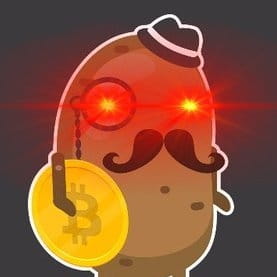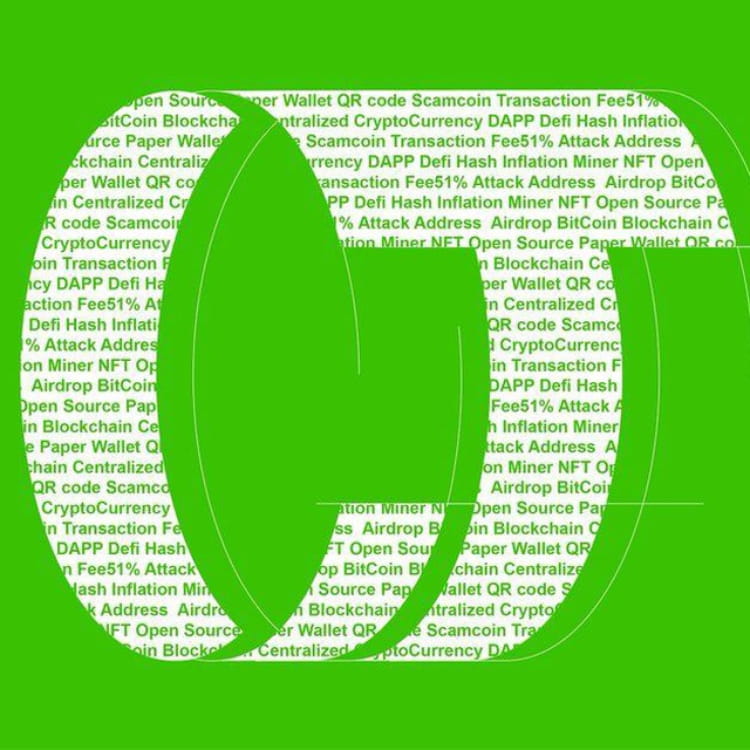
In 2024, crypto venture capital investment rebounded 28% YoY to $13.7 billion, signaling recovery but still below 2021-2022 highs.
In 2025, product-market fit, real user adoption, and emerging tech will drive funding.
◢ Key sectors
> Stablecoins: A dominant sector with growing global demand.
> DeFi: Institutional adoption and regulatory clarity fueling growth.
> Crypto AI & DePINs: Early-stage but high-potential innovations.
> Layer 1 & Layer 2 Evolution: Solana gaining traction, Ethereum facing competition.
Here’s how the top VC firms are positioning themselves for the 2025 🔽
+ @YziLabs (formerly Binance Labs): Focused on user adoption, fundamentals, and sustainable business models.
+ @dragonfly_xyz: Betting on DeFi, CeFi, stablecoins; cautious on tokenization and social media.
+ @PanteraCapital: Focus on crypto AI, DePINs, new Layer 1s as regulatory clarity improves.
+ @hack_vc: Focus on crypto AI, DeFi, and infrastructure; sees stablecoins as transformative.
+ @cbventures: Prioritizing on-chain apps, stablecoin payments, and crypto AI.
+ @blockchaincap: Targeting stablecoin infrastructure, institutional DeFi, and token distribution.
+ @galaxyhq: Strong on stablecoins and tokenization, bearish on Metaverse projects.
+ @multicoincap: Bullish on Solana and stablecoins; skeptical of Ethereum’s long-term dominance.
+ @PortalVentures: Investing in hybrid infrastructure-app platforms, less on ZK and middleware.
+ @hashed_official: Expanding globally; investing in institutional DeFi, regulated stablecoins, crypto AI.
✍️ My Take
2025’s crypto VC landscape is more disciplined, adoption-focused, and strategically aligned.
While funding may not hit previous highs, quality investments in stablecoins, DeFi, and AI-driven crypto solutions are setting the stage for long-term growth.
Justin Sun Sues Music Mogul David Geffen Over $78M Sculpture Dispute
Tron founder Justin Sun has filed a lawsuit against American film producer and record executive David Geffen in a bid to reclaim an Alberto Giacometti sculpture or get up to $80 million in damages.
Sun lodged the complaint in Manhattan federal court on Tuesday, alleging the bronze Le Nez sculpture, which he previously owned, had been stolen and sold to the entertainment mogul without his consent.
Sun Claims Aide Stole His Sculpture
The crypto entrepreneur claims that a former employee, Xiong Zihan Sydney, who had been his art advisor, masterminded the theft and subsequent sale of the artwork to Geffen.
Le Nez, which has been authenticated by the Giacometti Committee, was conceived by the artist between 1947 and 1949 and cast in 1965. Sun bought the sculpture for $78.4 million at a November 2021 auction of real estate developer Harry Macklowe’s art collection.
The 34-year-old says he intended to donate it to the Singapore-based ApeNFT Foundation, which focuses on blockchain-based fractional-ownership art investments. However, he never completed the transfer; instead, he allowed the sculpture to be exhibited virtually by the organization.
He later lent it to the Giacometti Foundation for an exhibition in Paris, where it was shown through January 2024. According to the lawsuit, soon after the artwork returned from France to Sun’s storage facility in Singapore, Xiong hatched a plot to steal it and sell it to Geffen, using her position to misrepresent the ownership of the piece and forge his signature on sale documents.
She allegedly introduced a fake Chinese lawyer named “Laura Chang” to validate the transaction, which involved swapping Le Nez for two pieces of art from the music magnate’s collection with a combined value of $55 million. The deal also included an extra $10.5 million in cash, bringing the total to $65.5 million.
Sun admits that he had considered selling the suspended bronze figure, but he wanted to recoup the $78.4 million he paid for it. The Liberland Prime Minister says he asked Xiong to keep an eye out for anyone that would pay at least $80 million for the piece, but he never authorized her to execute a sale on his behalf.
His legal team is arguing that Geffen should have identified red flags before concluding the deal, including the involvement of a lawyer conducting business using a personal Gmail account. They also claim that Xiong confessed to the fraud in May 2024, admitting to pocketing $500,000 from the deal.
Geffen Refutes Claims
However, Geffen’s lawyer, Tibor Nagy, has dismissed the allegations against his client as nothing more than “seller’s remorse,” calling the lawsuit “bizarre and baseless.” He stressed that the movie producer had no direct contact with Sun’s art advisor and that the transaction was conducted through intermediaries.
This is not the first time that Sun, who is the biggest investor in the President Donald Trump-backed World Liberty Financial, is in the news over art-related matters. In November last year, he made waves after spending $6.2 million on Maurizio Cattelan’s Comedian, a banana duct-taped to the wall, and eating it soon after.
The post Justin Sun Sues Music Mogul David Geffen Over $78M Sculpture Dispute appeared first on CryptoPotato.
Alexey Pertsev to Be Released From Prison Today With an Electronic Monitor
Alexey Pertsev will be released from prison today under electronic monitoring as he continues to appeal his money laundering conviction linked to Tornado Cash.
His release comes after months of unsuccessful bail requests and growing concerns over how the legal system treats privacy-focused crypto developers.
Pertsev Plans on Focusing on His Appeal
Pertsev confirmed the news in a February 6 post on X:
“Dear Friends, on Friday 7 February at 10 am I will be free! It is not real freedom, but it is better than prison,” it said.
He explained that a Dutch court had suspended his pretrial detention under electronic monitoring. The Tornado Cash developer added that this would allow him to focus on his appeal and fight for justice.
In August 2022, the U.S. Treasury imposed sanctions on the crypto mixer, accusing it of enabling the laundering of over $7 billion since 2019.
Pertsev was later arrested in the Netherlands that same month. He was charged with money laundering and facilitating illicit financial transactions through the platform. In May 2024, a Dutch court found him guilty and sentenced him to 64 months in prison.
Following his arrest, the Russian national started actively appealing his conviction and asking for bail. Despite multiple attempts, his requests were denied. His defense maintains that he created open-source software and should not be criminalized for its misuse.
Debate Over Developer Liability
The case has fueled debate over financial privacy and whether software developers should be held liable for how their code is used. Pertsev’s case gained momentum after a U.S. federal appeals court ruled in November 2024 that sanctions against Tornado Cash were unlawful. A January 21 court filing confirmed that the district court judgment had been overturned and sent back for further review.
The decision boosted arguments from privacy advocates who claim that developers should not be punished for actions beyond their control.
Ethereum co-founder Vitalik Buterin has voiced concern over Pertsev’s prosecution, calling it a troubling precedent for developers. Speaking at a Berlin conference last year, he said, “The situation with Alexey is quite unfortunate.” He added that many believed building software was a legitimate and legal way to protect privacy.
Buterin has also made several ETH donations to the 31-year-old’s legal fund through the decentralized fundraising platform Juicebox.
The post Alexey Pertsev to Be Released from Prison Today With an Electronic Monitor appeared first on CryptoPotato.
The logic behind the trend | Questions and answers
1. Last June, you said that you should save enough for 18 months of living expenses before considering investment. Now a year has passed, and you still say that you should save enough for 18 months. Shouldn’t there be 6 months left?
What I want to express is: at any time, you should ask yourself, do you have enough living expenses for 18 months? If not, you should save enough living expenses before considering other things.
I don't see any substantial improvements in any area for at least the next two years that we can see.
For example, recently the economic data of Guangdong Province for the first half of the year were released. From the data, we can see that there is still no positive improvement in various aspects.
So my opinion remains unchanged.
2. Books about Buffett
In my article, I introduced two series of books about Buffett, one is Buffett's letters to shareholders, and the other is the transcript of the Q&A session at Buffett's shareholders meeting.
There are many versions of these two books online, so I won't recommend any specific books. Interested readers can search online for "Buffett's Letter to Shareholders" and "Buffett's Q&A Record at the Shareholders' Meeting."
These two series of books are very thick. If you persevere and read them all, you will definitely gain something.
3. What is a trend? Most people in the market believe that the K-line moves in one direction.
I have no sense of technical indicators at all, so I don't look at trends from them.
I think the trend mainly depends on the basic logic of an ecosystem/project. If its logic is correct, and with the development of technology, new applications will emerge that can solve our problems, then I think its development trend is positive.
This "good" will eventually be reflected in asset prices. If I think that the price of an asset seriously overestimates its current practical value, then I think it has a bubble and I may want to sell it. Otherwise, I think it is undervalued and can be bought.
4. In the neutral strategy mentioned in stocks, the long and short varieties are different. In the ENA project, the long and short varieties are the same.
What Buffett meant is: In theory, mathematical formulas can be used to perfectly combine a combination strategy that is not affected by the market and at the same time locks in profits. This strategy includes long and short positions.
However, in reality, according to Graham's experience, it is difficult for specific operations to perfectly match mathematical formulas. If there is a slight mistake in the operation, the whole result will become very uncontrollable. What's more dangerous is that if leverage is used, the risk will be even greater.
Therefore, in this case, occasionally a very small operational deviation will be magnified into an uncontrollable loss, resulting in all previous efforts being wasted. Therefore, this seemingly "perfect" strategy combination is difficult to achieve in actual operation.
5. I have bought all the altcoins recommended to me, but I am afraid that these altcoins will be removed from the exchanges.
I would like to emphasize again here (even though I have emphasized it in previous articles): I have not recommended any other tokens except Bitcoin and Ethereum.
Of course, I have listed the tokens I have invested in and some of the tokens I have purchased, but I also made it very clear in the article that I am by no means recommending readers to buy them. Instead, I want to share with readers in the article the reasons, ideas, and logic behind my purchase of them.
A while ago, when I said to throw away the CRV in my hands, a reader's message left a deep impression on me. He said that he thought there was something wrong with the team when CRV had problems last time, and the team is a factor that I particularly value when judging a project. So he threw away CRV last time based on this logic.
If we look into the specific operation of this reader selling CRV and examine the logic behind this operation, we will find that the logic behind his operation is the real understanding of the core and key of my sharing: he knows my ideas and uses these ideas to guide his own operations.
It is entirely possible that the result will be better than mine and more correct than mine.
I think this is the real communication and gain.


 Harga terendah
Harga terendah Harga tertinggi
Harga tertinggi 


































.png)










